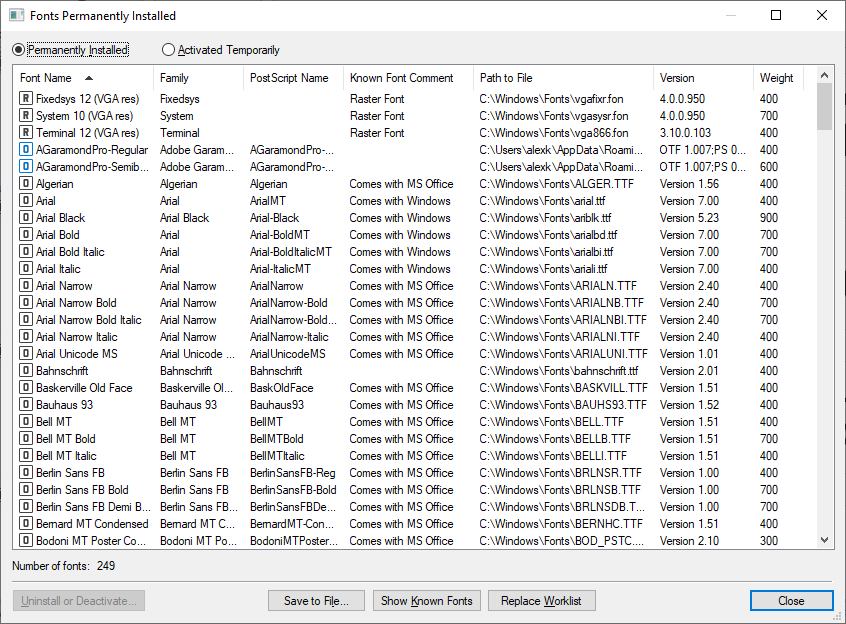Problem
With a standard install of Windows, (MS) Office and a few other applications, the Font folder (and the font list in Office applications) quickly gets bloated with several hundred (or even more) Fonts. Using a Font Manager like FontExpert is already expression of Windows' lack of suitable managing capabilities for fonts. The problem here is everyday handling, as the list of Fonts that are actually required in day-to-day standard use of Word, Excel or PowerPoint is often rather short. Having to scroll past two- or three-hundred Fonts (or look it up within this long list every time) to the one you need is not really good usability.
In order to keep things clear, it would be good to remove all unused and unwanted Fonts from the list.
De-installing all unwanted Fonts would be the obvious solution, but unfortunately this often leads to unforseeable strange and annoying behaviour by applications when they lack a necessary Font. There is no way to determine which Fonts are essential for the use and regular functioning of applications (i.e. giving a warning or blocking uninstall) - including MS Office - and thus a try-and-error approach is not really feasible when you have to sift through said several hundred fonts this way and check several applications every time you change one single font.
The "recently used" feature in MS Office mitigates the problem a bit, but you need to use a Font for it to work and it resets once you close the application.
Now Windows offers the handy setting of "hiding" a Font. This will keep it on the system (i.e. available), but - in theory - mask it from displaying within the "available Fonts" list in applications lilke Word, PowerPoint or Excel.
When hiding fonts, all MS Office applications stubbornly ignore this Windows setting though - making the feature quite useless (Office applications from at least one competitor do not have this problem BTW as they use the API properly). I searched for this topic and made sure that "hide Fonts based on regional settings" is ticked. However, it does not make any difference for MS Office. I tried this on several machines (Win 8.1 Home with Office 2013, Win 10 Pro with Office 2016) - always with the same result. so as a bottomline, this feature is not suitable to reduce the number of visible fonts, as MS Office does not seem to use the standard Windows API for displaying fonts in its applications.
FontExpert
FE has been offering groups for a long time, where you can activate and deactivate (or de-/ install) a group of fonts through FE. This does not solve the problem though, quite to contrary - the fonts are added to the already long list of installed fonts, bloating it even more. Of course you can deactivate the group comfortably from FE, but during their use the list of fonts displayed in the menu of applications still is extremely long and can be very user-unfriendly IMO.
Possible solution
Provide a plugin for MS Office (the most commonly used Office software) for use with FE. It could provide a workaround for the problem/phenomenon described above if it has the following capabilities:
- A drop-down menu for fonts similar to the one provided by Office itself, but instead of showing all installed (or loaded) fonts, it shows only the fonts from groups that are currently activated (or installed) through FE.
- This could be either a continuous list of all fonts activated through FE, or one with with sub-headings for the individual groups.
I have seen such application-specific add-ins from other software that simplifies their use in MS Office. Adobe Acrobat is one (and your plugins for Adobe), but there are also others that provide such functions to hook into Office and make their functions easily accessible within Word (e.g. through a FE ribbon) and enhance overall usability.
